Finding birth records before 1837 can be a difficult affair, and often baptism records are the only available source of information. London boasts some of the earliest birth records in the country, such as those of Dr Williams Library, part of the RG4 and RG5 records included within the non-conformist records. These records have been complied from various unpublished registries and date back to 1537. Many include three generations and these previously hidden records are only available online at www.thegenealogist.co.uk and www.bmdregisters.co.uk. The entire ‘BMD Registers’ collection contains just over 7 million records, with The Protestant Dissenters Registry at Dr William’s Library contributing nearly 50,000 birth records.
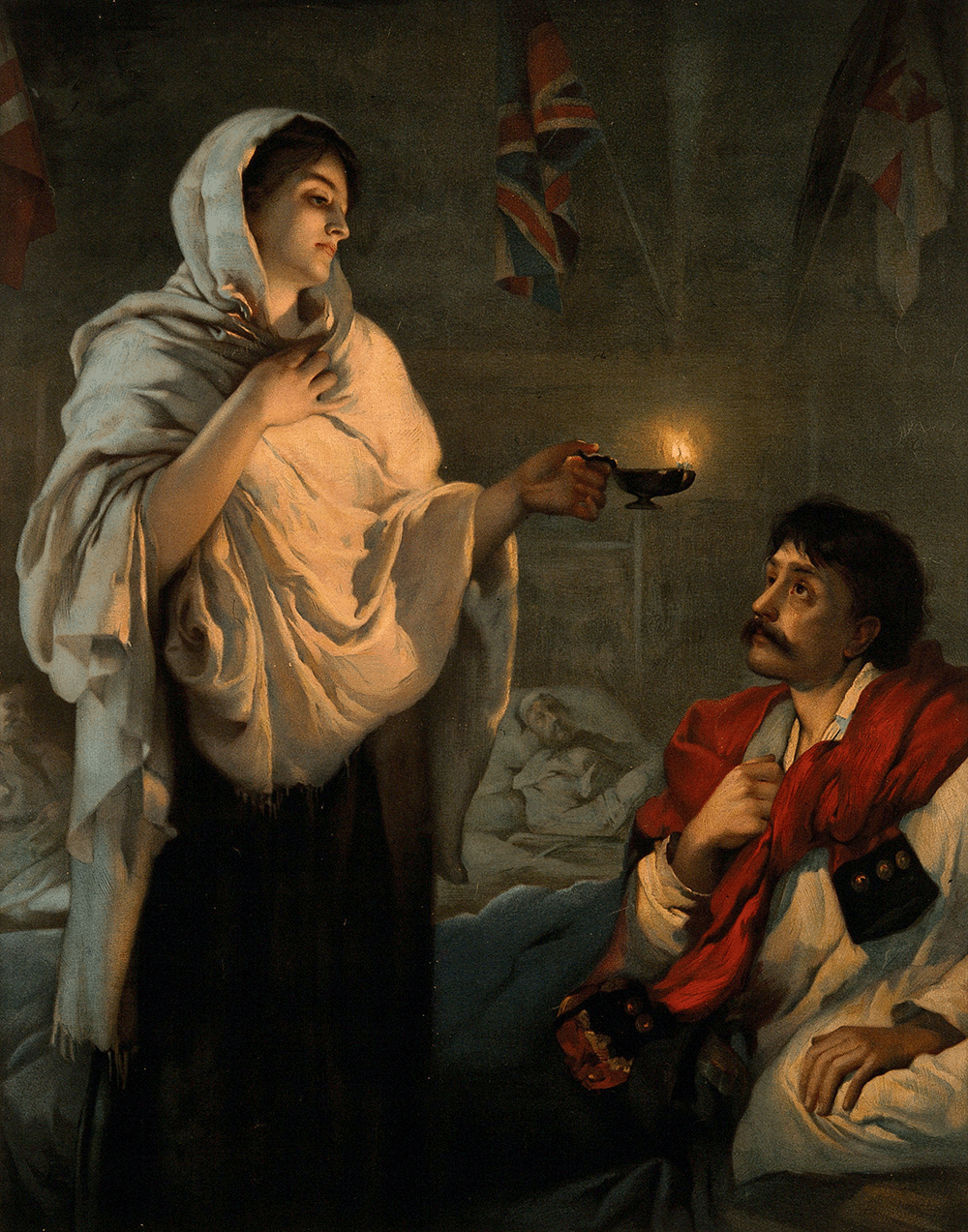
The birth of Florence Nightingale is recorded within these records including an official birth certificate. It was necessary to register births and have some form of certificate to prove your date of birth in later life. People often travelled across the country and from abroad to register births at the London Registry, making them a useful research tool for finding ancestors across the country as well as those living in London.
Florence’s birth certificate was simple to find entering “Florence Nightingale birth” into the Keyword Master Search on The Genealogist and selecting “BMDs” to search, I clicked the “Search” button and two entries appeared in front of me. I could see they were both from the Non-Conformist records: one was the certificate, and the other was a record of the birth.
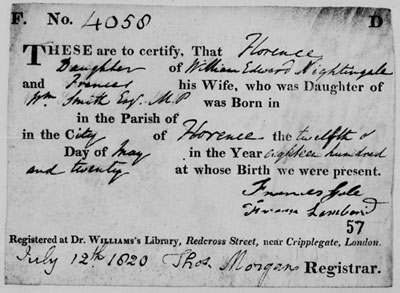
Florence was raised in a life of luxury and comfort, but despite this felt suffocated by the society that surrounded her. She was often depressed and lonely, which perhaps was the root of her need to care for the sick and wounded, who were so often at this time cast out from society. Her mother and sister were known to have fainted when they first heard of Florence’s ambition to become a nurse. For a girl of her status, the only ambition she should have had was to be a wife and mother, but Florence broke the mould enforced upon her and announced in 1845 that she was to enter nursing.
Access Over a Billion Records
Try a four-month Diamond subscription and we’ll apply a lifetime discount making it just £44.95 (standard price £64.95). You’ll gain access to all of our exclusive record collections and unique search tools (Along with Censuses, BMDs, Wills and more), providing you with the best resources online to discover your family history story.
We’ll also give you a free 12-month subscription to Discover Your Ancestors online magazine (worth £24.99), so you can read more great Family History research articles like this!
After serving in the Crimean War, Florence returned to England and established her Nursing school. This school still exists today, now called the Florence Nightingale School of Nursing and Midwifery, and is part of King’s College London. She moved from Old Burlington Street, in St James Westminster, to 35 South Street, St George Hanover Square (now known as Mayfair) in 1865, which later became 10 South Street, and spent the rest of her life there.
It was a bustling house with four levels, a constant stream of visitors and household staff to attend to the needs of both Florence and her visitors. You can see Florence’s life in London through the census records available on The Genealogist. Each household on the census has been transcribed and gives a clear record of Florence, her place of birth, her occupation, age and also the same details for all the household staff.
Census entries with Florence Nightingale can be seen in 1841, 1861, 1871, 1881, 1891 and 1901. I found the entry for 1861 simply by typing “Florence Nightingale Nurse” into the Keyword Master Search on The Genealogist, selecting the 1861 Census, and clicking “Search”. There was only one result, and with one click of a button next to the entry, I could view the original census image, which confirmed that it was indeed Florence Nightingale.
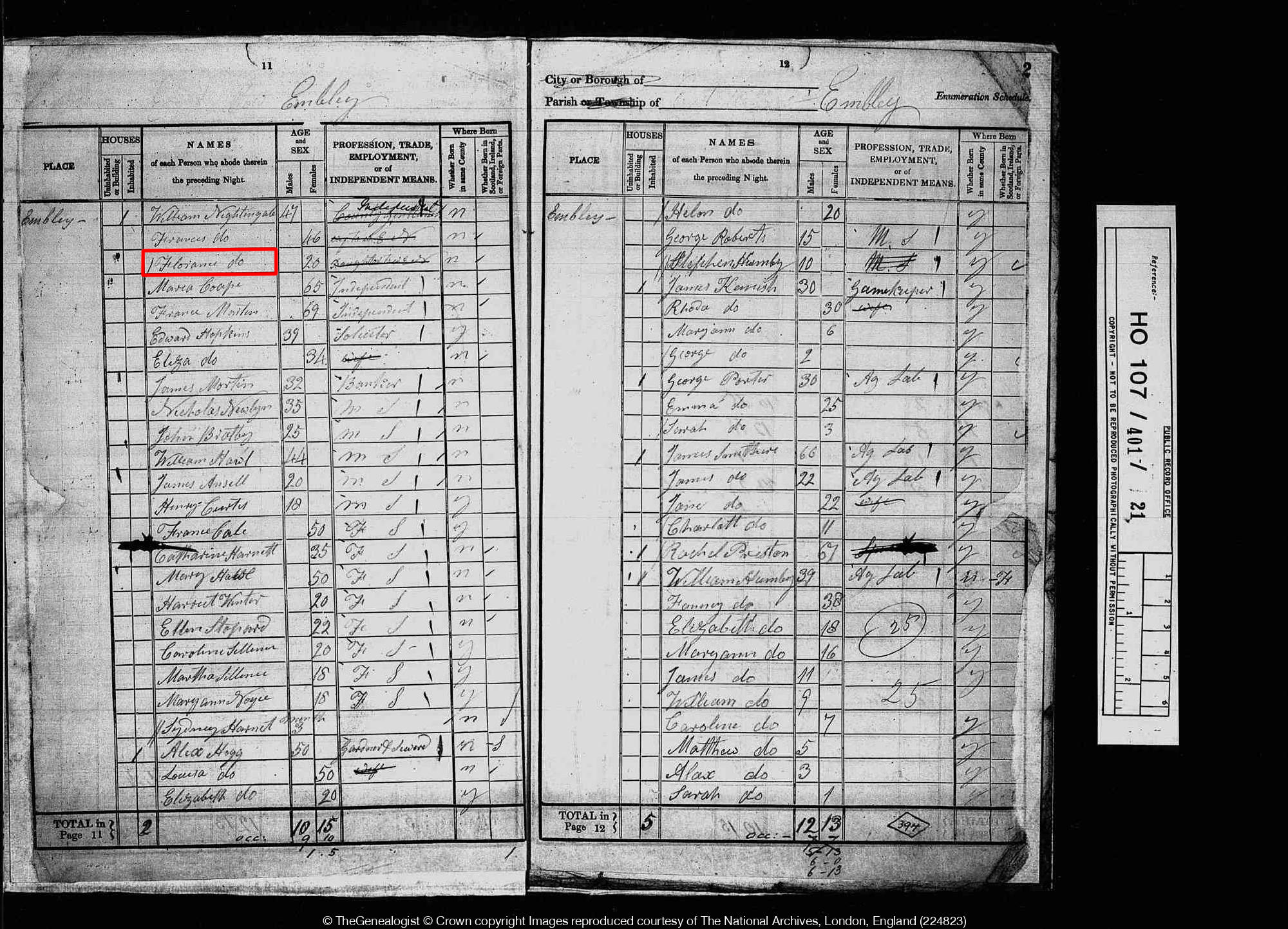
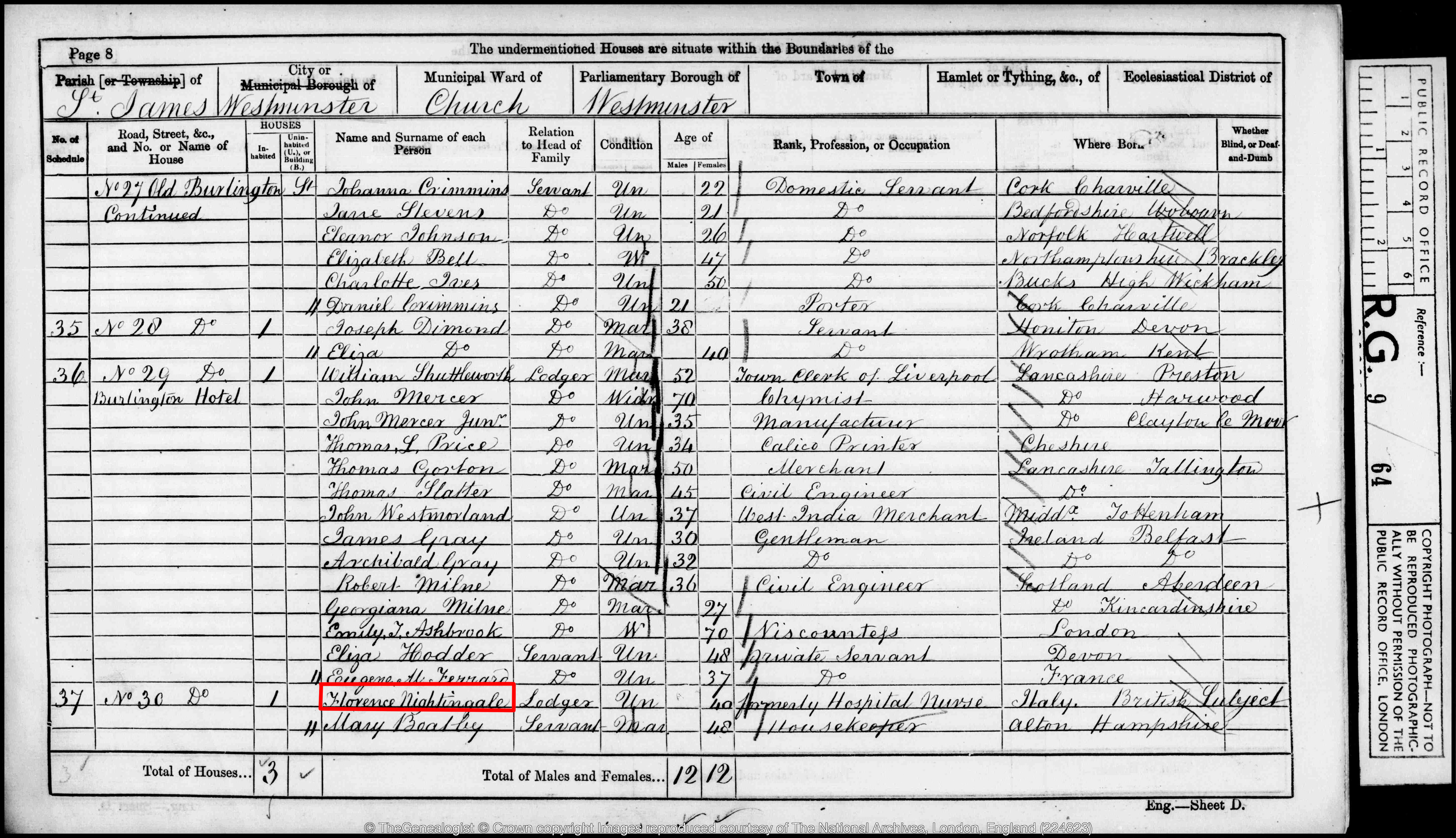
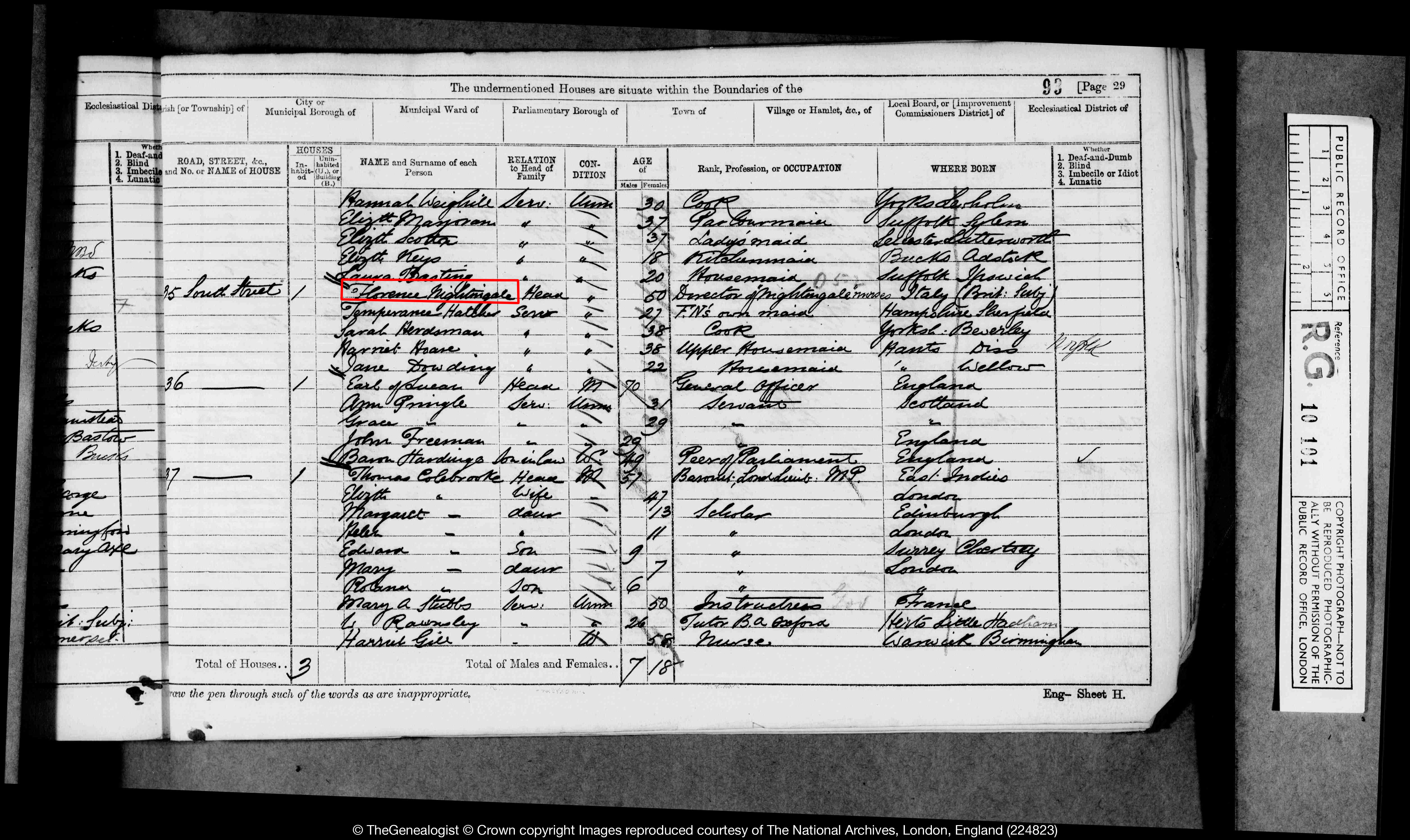
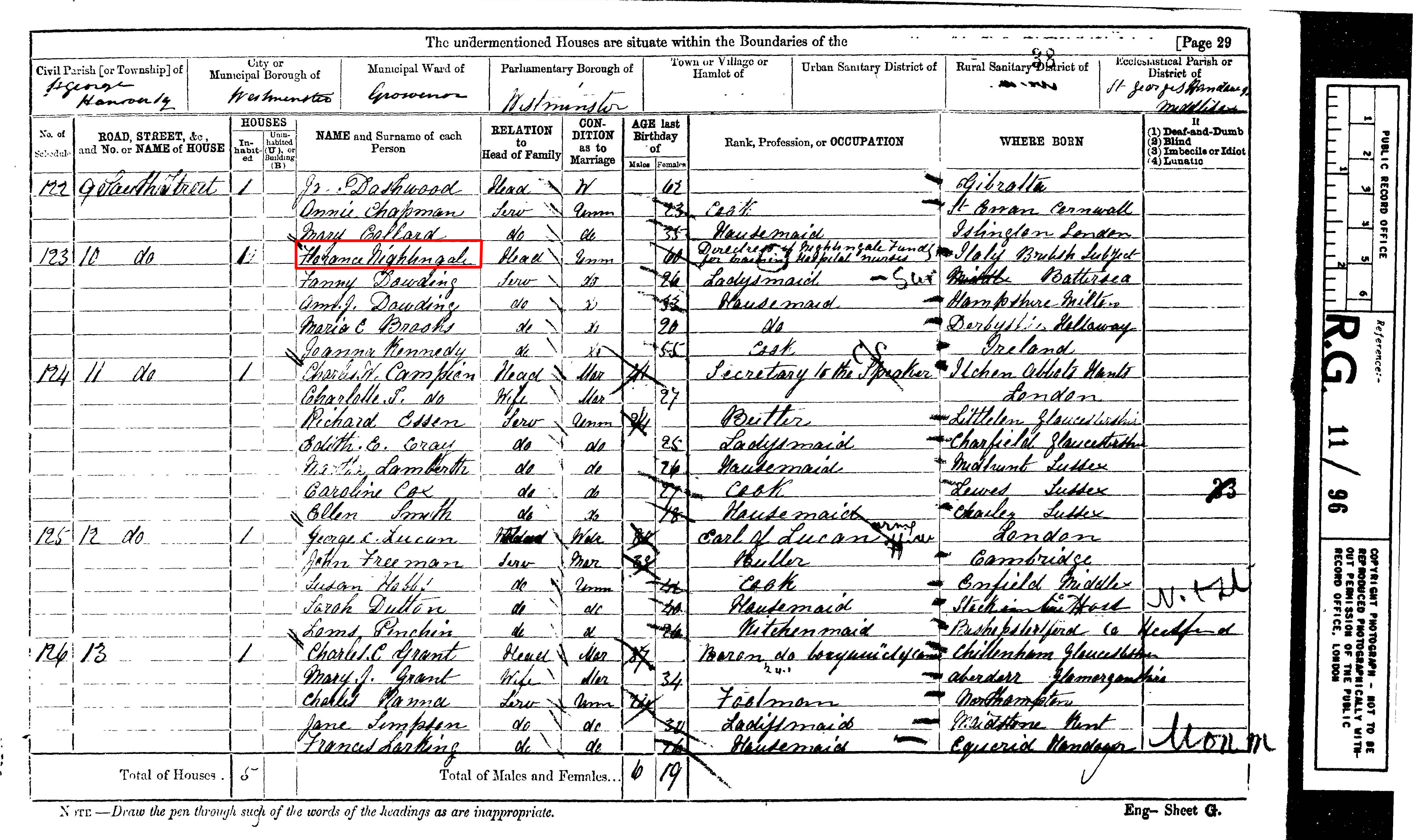
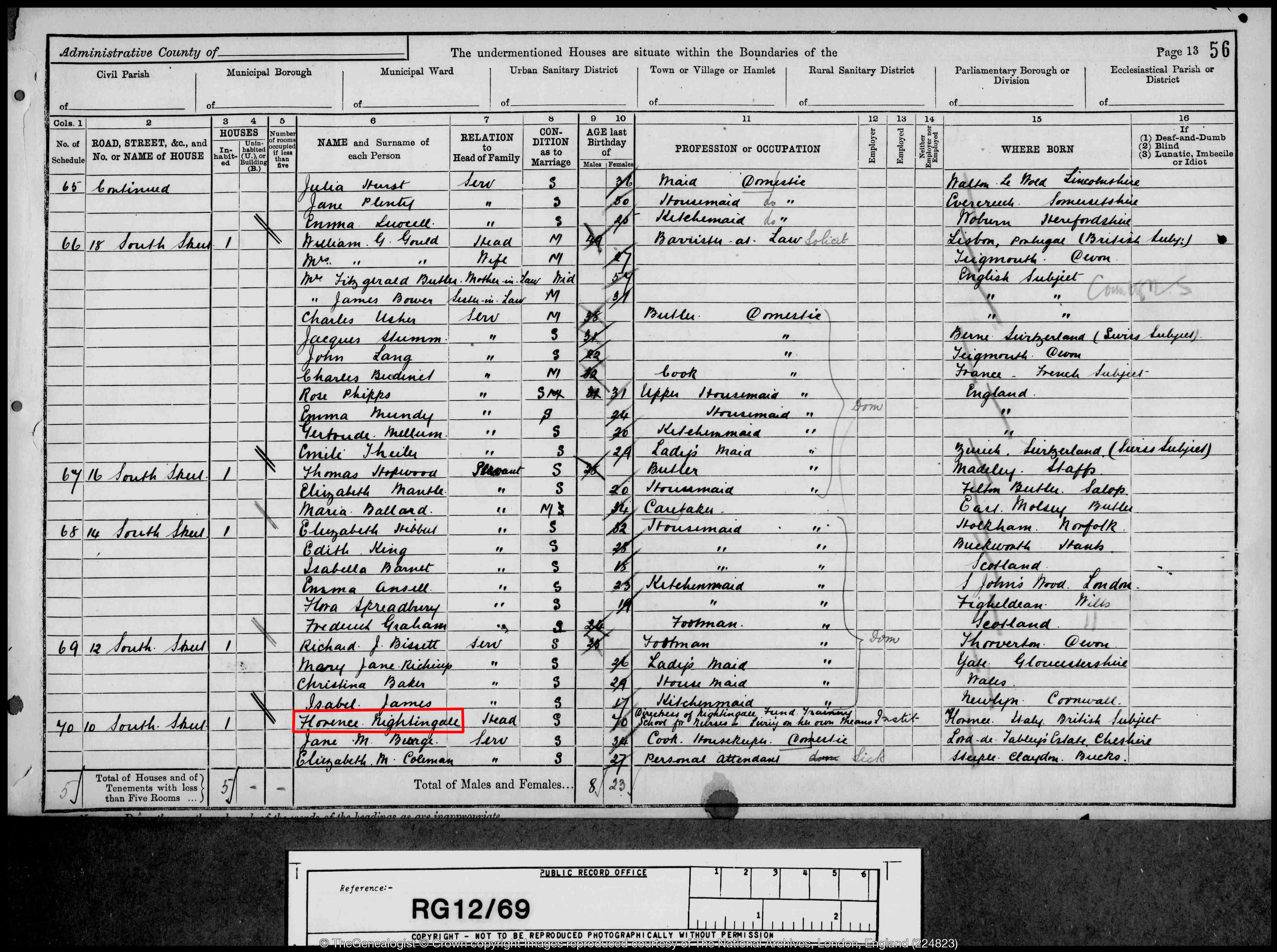
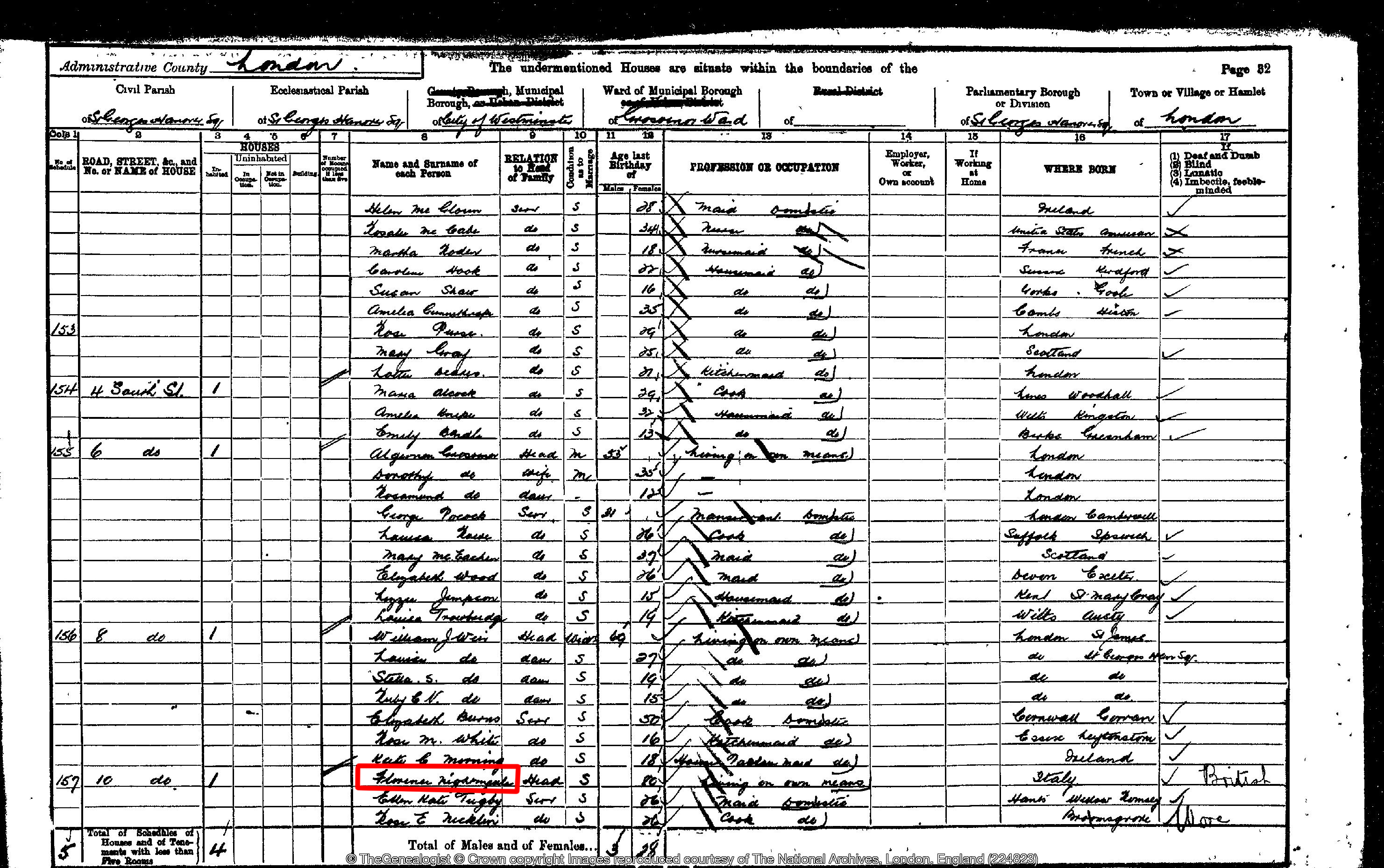
Her death is recorded on the BMD index in 1910. The Genealogist is an ideal website for tracing your ancestors, with
credit free subscriptions starting at £44.95, voted Best BMD and Census site 2008*, and you never know where the
search will lead. You may find famous figures like Florence Nightingale hiding in the shadows.
* YFT award December issue 2008
Census records are available at www.thegenealogist.co.uk
BMD Registers available at www.thegenealogist.co.uk and
www.bmdregisters.co.uk






